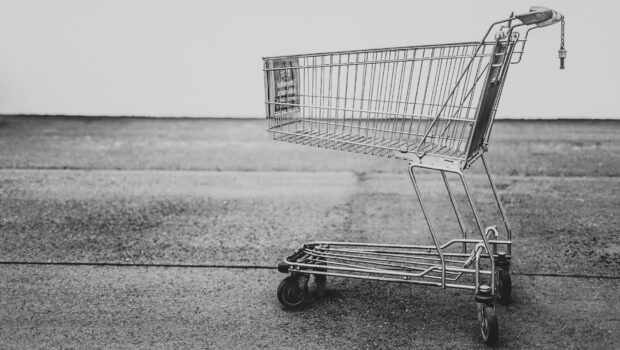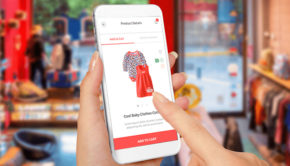10 Techniques To Prevent Cart Abandonment
Reading the data on cart abandonment rates may be pretty distressing, so we made up this article on 10 techniques to prevent cart abandonment from helping you better manage your work.
Sixty-seven percent of internet carts are abandoned before a transaction is completed, and nearly 97 percent of mobile carts are abandoned. There is an extensive list of reasons customers abandon their carts, but one of the biggest is the time it takes to check out. To add insult to injury, forget about it if you need to do any severe texting on your phone while you shop. Customers are more likely to abandon a mobile purchase if they submit too much information, so finding a mechanism to allow correct address collection and gathering other crucial information is essential. Somehow, there must be a better way.
Instead of concentrating on the abandonment rate, maybe a better strategy is discovering how to enhance conversions in those scenarios when clients are ready to purchase. Indeed, a fraction of products in shopping carts are not meant for instant purchase. Many use carts to make shopping lists or wish lists. Others add things to a basket to find price, availability, and sizing information or establish the shipping charges. You may easily exclude these cases from your calculations if you provide other options for these clients. In addition, the more things in the basket, the higher the probability of price shock and the longer the choice process. Rather than improving your cart conversion rates initially, you should concentrate on stopping potential customers from adding products to your basket before they intend to buy. To rephrase, you shouldn’t design your e-commerce platform with the goal of funneling all customers onto a single checkout page. Focus more on the customer experience as a whole, particularly on mobile users.
Here are five strategies to deliver a better digital consumer experience:
- Clarify your delivery prices. If there’s distance dependency, give an easy-to-find cost calculator that takes little data, e.g., zip code. You should be competitive by including the cost of shipping in your prices and making it obvious to customers that they will not be charged extra for shipping.
- You should include size and availability details on your website. A clear and readily understood sizing chart helps consumers pick the proper size and decreases the inclination to buy many sizes to return products that don’t fit. You will reduce customers’ “unlikely purchases” in the cart, and the frequency with which they return to the shop will rise if they are sent email alerts when out-of-stock products or sizes become available.
- Consider introducing a new “wish list” feature. Customers may make a wish list of products they’re interested in and conveniently add them to their shopping cart later. The customers may market wish list items in other ways (video, social media, etc.) without fear of losing the transaction because of the customer’s attention being diverted.
- Think of releasing a mobile app to track your grocery list. Using these applications, consumers may compare prices and features of similar items on the market. Even if you only get a small percentage of your client’s business, it’s still worth your time to learn about their wants and options for satisfying them.
- Put your prices where everyone can see them. Waiting until a consumer adds an item to their basket before showing them the price makes for a bad customer experience (by making them do additional, needless steps) and guarantees a greater cart abandonment rate.
Customers can make an informed purchasing choice more quickly when all potential barriers to purchase are eliminated before they even start adding things to their basket. You can now give your full attention to streamlining the checkout process by eliminating any obstacles your customers may encounter due to inputting their personal information and payment methods.
Reducing checkout friction requires you to consider the whole process, not just the data you need to gather. “Workflow” refers to the actions needed to complete a purchase. Improving data quality, for instance, by facilitating precise address recording, is another benefit of streamlining the operation.
Streamlining processes is only one of five strategies to boost customer satisfaction
6. Build a solid track record for dependability and excellent service to your clientele. Many consumers would instead not use your site if it requires them to provide personal information because of rising fears about cyber security. However, for those that do, the checkout procedure may be shortened to one or two clicks at most, mainly to ensure that the information already entered is still accurate. Maximize the number of consumers who save the information by clearly showing security-related signals and accurate information on customer satisfaction.
7. Create a loyalty program. This program is another technique to persuade clients to save information when joining. Loyalty programs provide several advantages to merchants, such as receiving customers’ permission to email or text offers. They also allow consumers to sign in and purchase without inputting extra data.
8. Reduce the time spent typing by as much as possible. Especially for your mobile users, facilitating the acquisition of customer information is crucial. Most checkout forms follow the standard flow of name, email address, home address, credit card information, etc., and frequently ask for the email address to be inserted twice to confirm correctness. The issue is that the time it takes to input the number of keystrokes necessary increases all this information. Remember that the less complicated the procedure is, the greater your chances of successfully closing a net new client.
9. Use a simple type-down method to record addresses reliably. For desktop users, intuitive type-down works like Google search, suggesting alternative selections and removing the need to type. When used for address verification, not only does this save on keystrokes, but it also assures that only bona fide and adequately constructed addresses are saved. Also, it’s only fair to require one entry when asking for email addresses. Check the address immediately to let the client know about any issues while they are still working on it. The extra work of inputting an email address twice isn’t always worth it, mainly because many consumers will copy and paste the original address they typed.
10. Collect mobile phone numbers through text messages. Making it more straightforward for mobile users to opt-in is crucial. One option is to ask for a short code to be texted to you (such as “shop” to 12345) in exchange for a discount or other incentive. Reverse lookup from text eliminates the need for users to enter their name and address manually. Ask for their 5-digit zip code, and if it matches what you have, you may safely proceed to check their contact information. This strategy often decreases the keystrokes necessary from over 100 to only 10 or so. Even if the procedure is simplified for the consumer, you can still collect all the necessary data.
In summary, concentrate on the distinct phases of your buyer’s journey and optimize for each portion independently. Enhancing the shopping and browsing experiences of your customers is possible. Increasing your sales and conversions may be accomplished by providing a better shopping experience for your clients. Visit EmailOversight for more valuable tools and information. This website has the solutions for all of your email and data issues.
Cover Image by Unsplash
















